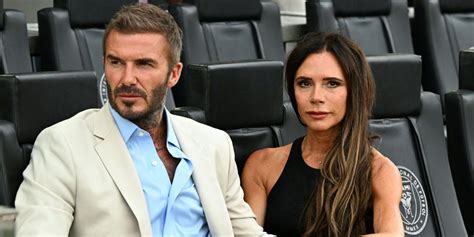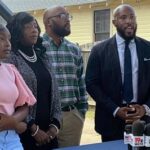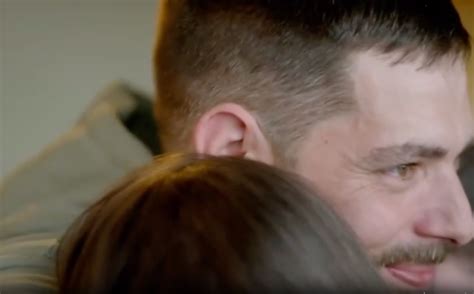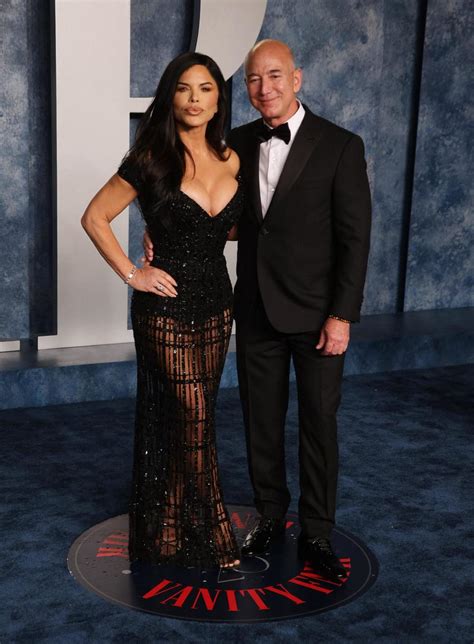
David Beckham underwent surgery after an Achilles tendon rupture, with wife Victoria Beckham sharing an update on social media, assuring fans of his well-being and expressing her gratitude for the medical team.
David Beckham is recovering from surgery to repair a ruptured Achilles tendon, his wife, Victoria Beckham, revealed in a recent social media post. The former England captain sustained the injury during an off-field incident, prompting immediate medical attention and subsequent surgery. While the specific details surrounding the injury remain undisclosed, Victoria Beckham’s post provided a reassuring update on her husband’s condition, indicating a positive outlook for his recovery.
Victoria Beckham took to Instagram to share a photo of David in a hospital bed, captioning it with a message of love and support. “David is under the safe care of some great doctors and is doing well. So grateful for the well wishes,” she wrote, followed by heart emojis. The post served as the primary source of information for fans and media outlets alike, offering a glimpse into the situation and quelling any potential concerns about the severity of the injury.
The Achilles tendon, a strong fibrous cord located at the back of the ankle, connects the calf muscles to the heel bone. It plays a crucial role in walking, running, jumping, and other weight-bearing activities. A rupture of the Achilles tendon, often described as a sudden, sharp pain in the back of the ankle, can significantly impair mobility and require surgical intervention for optimal recovery. Athletes, particularly those involved in high-impact sports, are at an increased risk of Achilles tendon injuries.
David Beckham’s athletic career, spanning over two decades, is renowned for its remarkable achievements and global impact. He rose to prominence as a midfielder for Manchester United, where he won numerous Premier League titles, FA Cups, and the Champions League. His signature free-kicks and precise passing skills made him a fan favorite and a key player for both club and country. In 2003, Beckham joined Real Madrid, adding another prestigious chapter to his career and further solidifying his status as a global icon. He later played for the Los Angeles Galaxy in Major League Soccer (MLS), contributing to the league’s growing popularity and paving the way for other international stars to follow suit. His final professional stint was with Paris Saint-Germain (PSG), where he helped the team secure the Ligue 1 title before retiring from professional soccer in 2013.
Beyond his on-field accomplishments, David Beckham has become a prominent figure in the world of business, fashion, and philanthropy. His collaborations with major brands, endorsements, and entrepreneurial ventures have made him one of the most recognizable and marketable athletes in the world. He has also been actively involved in charitable initiatives, working with organizations such as UNICEF to promote children’s rights and welfare. His influence extends far beyond the soccer field, making him a global ambassador for sports, style, and social responsibility.
The recovery process for an Achilles tendon rupture typically involves a period of immobilization, followed by gradual rehabilitation exercises to regain strength, flexibility, and range of motion. The duration of recovery can vary depending on the severity of the rupture, the individual’s overall health, and their adherence to the prescribed rehabilitation protocol. Athletes often require several months of intensive physical therapy to return to their pre-injury level of performance. While the exact timeline for David Beckham’s recovery remains uncertain, his history of dedication and perseverance suggests that he will approach the rehabilitation process with the same determination that characterized his playing career.
The news of David Beckham’s injury has elicited an outpouring of support from fans, fellow athletes, and celebrities around the world. Social media platforms have been flooded with messages of encouragement and well wishes for a speedy recovery. Many have lauded his resilience and determination, expressing confidence that he will overcome this setback and return stronger than ever. The global outpouring of support underscores the profound impact that David Beckham has had on the world of sports and beyond, solidifying his legacy as an icon and role model.
The incident raises questions about Beckham’s current level of physical activity and whether he was participating in any formal sports or training at the time of the injury. While retired from professional soccer, Beckham has maintained an active lifestyle, engaging in various fitness activities and occasionally participating in celebrity soccer matches. The exact circumstances surrounding the Achilles tendon rupture remain unclear, but it serves as a reminder of the potential risks associated with physical activity, even for seasoned athletes. The recovery process will undoubtedly require patience and discipline, but Beckham’s track record of overcoming challenges suggests that he is well-equipped to navigate this latest hurdle.
The Beckham family has been a prominent fixture in the public eye for many years, with both David and Victoria achieving success in their respective careers. Their marriage, often subject to media scrutiny, has remained a strong and enduring partnership. Together, they have built a global brand, encompassing fashion, beauty, and lifestyle products. Their children have also garnered attention, with some pursuing careers in modeling, acting, and music. The Beckham family’s influence extends across various industries, making them one of the most recognizable and influential families in the world.
The injury to David Beckham’s Achilles tendon serves as a reminder of the importance of injury prevention and proper conditioning in sports and physical activity. Achilles tendon ruptures can often be prevented by incorporating regular stretching and strengthening exercises into training routines, wearing appropriate footwear, and avoiding sudden increases in activity level. Athletes should also be aware of the warning signs of Achilles tendonitis, such as pain and stiffness in the back of the ankle, and seek medical attention promptly if these symptoms occur. Early diagnosis and treatment can help prevent more serious injuries, such as a complete rupture of the tendon.
As David Beckham embarks on his recovery journey, he can draw inspiration from his past achievements and the unwavering support of his family, friends, and fans. His dedication, resilience, and positive attitude have been hallmarks of his career, and these qualities will undoubtedly serve him well as he works towards a full recovery. The world of sports eagerly awaits his return, knowing that he will continue to inspire and motivate others with his unwavering spirit and commitment to excellence.
In-Depth Analysis and Background:
David Beckham’s Achilles tendon rupture is a significant injury that will require a period of recovery and rehabilitation. Understanding the nature of the injury, the recovery process, and the potential impact on his future activities provides a more complete picture of the situation.
The Achilles Tendon and Its Function:
The Achilles tendon is the largest and strongest tendon in the human body. It connects the calf muscles (gastrocnemius and soleus) to the heel bone (calcaneus). This tendon is essential for performing movements such as walking, running, jumping, and standing on tiptoes. When the calf muscles contract, the Achilles tendon pulls on the heel, allowing the foot to plantarflex (point downwards). The Achilles tendon is subjected to significant stress during physical activities, making it vulnerable to injury.
Causes of Achilles Tendon Ruptures:
Achilles tendon ruptures can occur due to a variety of factors, including:
- Sudden Increase in Activity: Rapidly increasing the intensity or duration of physical activity without proper conditioning can overload the tendon and lead to a rupture.
- Age: As people age, the Achilles tendon can become less flexible and more prone to injury.
- Poor Conditioning: Lack of strength and flexibility in the calf muscles can increase the risk of Achilles tendon rupture.
- Inadequate Warm-Up: Failing to properly warm up the muscles and tendons before exercise can make them more susceptible to injury.
- Footwear: Wearing inappropriate footwear that does not provide adequate support or cushioning can contribute to Achilles tendon problems.
- Certain Medications: Some medications, such as fluoroquinolone antibiotics, have been linked to an increased risk of Achilles tendon rupture.
- Direct Trauma: A direct blow to the Achilles tendon can cause it to rupture.
- Pre-existing Tendonitis: Chronic inflammation of the Achilles tendon (tendonitis) can weaken the tendon and make it more likely to rupture.
Symptoms of an Achilles Tendon Rupture:
The symptoms of an Achilles tendon rupture typically include:
- Sudden, Severe Pain: A sharp, stabbing pain in the back of the ankle or calf.
- A “Pop” or “Snap” Sound: A distinct audible sensation at the time of the injury.
- Difficulty Walking: Inability to walk normally or stand on tiptoes.
- Swelling and Bruising: Swelling and bruising around the ankle and calf.
- A Gap in the Tendon: A visible or palpable gap in the Achilles tendon.
- Weakness: Weakness when trying to plantarflex the foot.
Diagnosis of an Achilles Tendon Rupture:
A doctor can usually diagnose an Achilles tendon rupture based on a physical examination. The Thompson test, which involves squeezing the calf muscle while the patient lies face down, is commonly used to assess the integrity of the Achilles tendon. If the tendon is intact, squeezing the calf muscle will cause the foot to plantarflex. If the tendon is ruptured, the foot will not move. Imaging tests, such as MRI or ultrasound, may be used to confirm the diagnosis and assess the extent of the injury.
Treatment of an Achilles Tendon Rupture:
The treatment for an Achilles tendon rupture depends on several factors, including the severity of the rupture, the patient’s age, activity level, and overall health. Treatment options include:
- Non-Surgical Treatment: Non-surgical treatment involves immobilizing the foot in a cast or brace for several weeks to allow the tendon to heal. This approach is typically reserved for patients who are not good candidates for surgery or who have a partial rupture.
- Surgical Treatment: Surgical treatment involves repairing the ruptured tendon by stitching the torn ends together. This approach is generally recommended for active individuals who want to return to high-level activities.
Rehabilitation After Achilles Tendon Rupture:
Regardless of whether surgical or non-surgical treatment is chosen, rehabilitation is essential for restoring function and preventing re-rupture. Rehabilitation typically involves a gradual progression of exercises to improve strength, flexibility, and range of motion. The rehabilitation process can take several months, and it is important to follow the instructions of a physical therapist closely.
Potential Complications of Achilles Tendon Rupture:
Potential complications of Achilles tendon rupture include:
- Re-Rupture: The Achilles tendon can re-rupture, especially if the rehabilitation process is not followed properly.
- Infection: Infection can occur after surgery.
- Nerve Damage: Nerve damage can occur during surgery.
- Stiffness: Stiffness of the ankle joint can occur after immobilization.
- Chronic Pain: Chronic pain can develop in some cases.
- Blood Clots: Blood clots can form in the leg after surgery.
David Beckham’s Recovery Process:
David Beckham’s recovery process will likely involve a combination of surgery, immobilization, and rehabilitation. He will need to work closely with a team of doctors and physical therapists to ensure a full recovery. The exact timeline for his return to activity will depend on the severity of the injury and his response to treatment. Given his history of athleticism and dedication, he is likely to approach the rehabilitation process with the same determination that characterized his playing career.
Impact on Future Activities:
While it is too early to say for certain how the Achilles tendon rupture will affect David Beckham’s future activities, it is possible that he may need to modify his training regimen and avoid high-impact activities. However, with proper rehabilitation, he should be able to return to many of the activities he enjoys.
Broader Context and Implications:
David Beckham’s injury highlights the importance of injury prevention in sports and physical activity. By taking steps to prevent injuries, athletes can reduce their risk of suffering setbacks and maintain their overall health and well-being. These steps include:
- Proper Warm-Up: Warming up the muscles and tendons before exercise.
- Gradual Progression: Gradually increasing the intensity and duration of physical activity.
- Strength Training: Strengthening the muscles that support the joints.
- Flexibility Training: Stretching the muscles and tendons to improve flexibility.
- Appropriate Footwear: Wearing appropriate footwear that provides adequate support and cushioning.
- Listening to Your Body: Paying attention to pain and discomfort and avoiding activities that cause pain.
By following these guidelines, athletes can minimize their risk of injury and enjoy a long and healthy career.
The Beckham Brand and Public Image:
The incident is unlikely to significantly impact the Beckham brand. David Beckham’s image has been carefully cultivated over the years, and his reputation as a dedicated athlete, family man, and philanthropist remains strong. While the injury may temporarily limit his physical activities, it is unlikely to affect his endorsements or business ventures. In fact, his recovery process may even generate positive publicity, as fans and media outlets follow his progress and offer their support.
Conclusion:
David Beckham’s Achilles tendon rupture is a setback, but it is not insurmountable. With proper treatment and rehabilitation, he should be able to make a full recovery and return to many of the activities he enjoys. His dedication, resilience, and positive attitude will undoubtedly serve him well as he navigates this latest challenge.
Frequently Asked Questions (FAQ):
1. What exactly happened to David Beckham?
David Beckham suffered a ruptured Achilles tendon. According to Victoria Beckham’s Instagram post, he underwent surgery to repair the injury. The specific circumstances of how the injury occurred haven’t been publicly released.
2. How serious is an Achilles tendon rupture?
An Achilles tendon rupture is considered a serious injury that requires either surgical or non-surgical intervention followed by a lengthy rehabilitation process. It can significantly impair mobility and the ability to perform activities like walking, running, and jumping. Recovery can take several months, with athletes often requiring intensive physical therapy to return to their pre-injury level of activity.
3. What is the typical recovery time for an Achilles tendon rupture?
The typical recovery time for an Achilles tendon rupture varies depending on the individual, the severity of the injury, and the treatment method (surgical or non-surgical). Generally, it can take anywhere from 6 months to a year to fully recover and return to normal activities. The initial phase involves immobilization in a cast or brace, followed by a gradual progression of physical therapy to regain strength, flexibility, and range of motion.
4. Will David Beckham be able to play soccer again?
While David Beckham retired from professional soccer in 2013, the question of whether he’ll be able to participate in recreational soccer or other sports activities is relevant. It’s too early to definitively say whether he’ll be able to play soccer at his previous level of intensity. His ability to return to sports will depend on the success of his surgery and rehabilitation. It’s highly probable that he will be able to resume some form of physical activity, with certain modifications.
5. How is Victoria Beckham supporting David during his recovery?
Victoria Beckham has publicly expressed her support for David through social media, sharing a photo of him in the hospital and conveying her gratitude for the medical team’s care. Her post indicates that she is providing emotional support and ensuring he receives the best possible medical attention. The couple is known for their strong partnership, and Victoria’s support will undoubtedly play a significant role in David’s recovery process.









